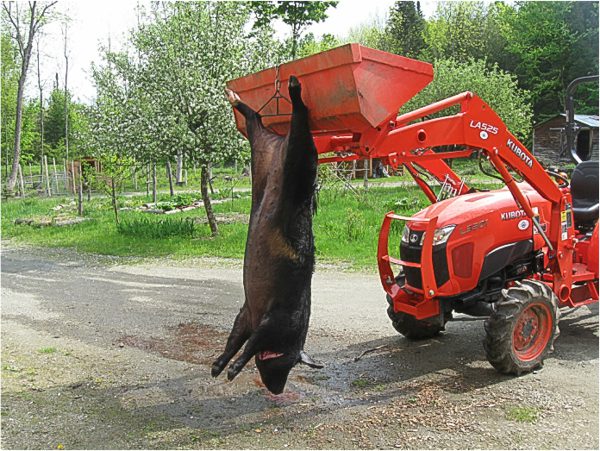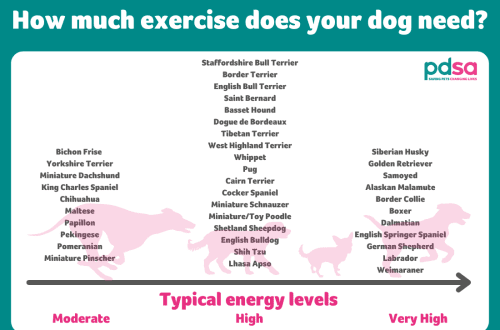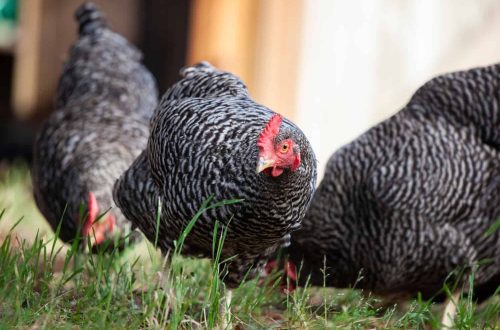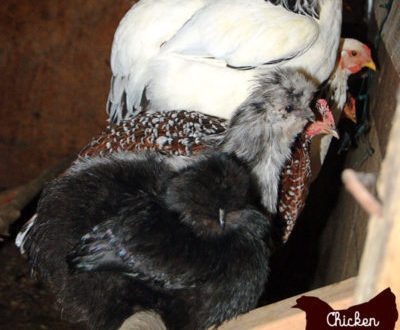
How to slaughter a pig: prepare the animal for slaughter, bleed and butcher the carcass
For those who are just starting to raise pigs for meat, a difficult question arises: how to slaughter a pig. After all, the property of the resulting product depends on how correctly the process is carried out. Of course, you can invite a person who has significant experience in this matter, or take the animal to the slaughterhouse. But it is better if the owner himself masters this skill, since the newly-made farmer does not need extra expenses.
Contents
Preliminary preparation
To avoid problems with the sale of meat, before slaughter, it is recommended to invite a veterinarian to examine the animal and ascertain its health. He will issue a mandatory certificate, and then the meat processing plant will accept the product without any questions.
Then, it is necessary to prepare the necessary accessories for the upcoming procedure, to provide for everything, so as not to waste time later, because it is very important to carry out all manipulations quickly. So what will be required:
- Нож should be long and well sharpened, it is important that the blade be strong and rigid.
- Pallet made of wood or a convenient platform, they will carry out all the manipulations for cutting the carcass of a pig.
- Strong ropes.
- solder pump the pig carcass will be burned.
- For blood collection you need utensils.
- Clean rags for soaking up blood and washing the skin.
The animal must also be prepared for slaughter. Before the procedure, 12 hours before, the pig cannot be fed, the intestines should be cleansed to the maximum. In addition, a hungry pig will be much easier to lure out of the pen. She is only given unlimited amounts of pure water, butand 3 hours before the slaughter of the pig, they also stop giving liquid.
If the room where the animal is kept is small, or it is too cramped, and the conditions of detention are unimportant, then it will need to be washed with warm water with a brush.
Slaughter time
It is known that a pig once a month enters a state of hunting, and if it is slaughtered during this period, then the meat at the time of a hormonal surge significantly loses its quality. That’s why it means a lot to choose the right moment. This is done simply: as the last hunt ends, it is advisable to wait 10 days or two weeks. If overexposed, then there is no guarantee that the next stage of entry into a new phase of the sexual cycle will be missed.
The time of day is selected depending on the temperature of the air outside. When it’s hot, the best time is early morning. Then the morning coolness will help preserve the meat, and will not allow flies to sit on it. You need to calculate about 2 hours for XNUMX jobs.. One person with certain skills will quite meet this deadline. In the cold period, there is no particular difference when to start a responsible event.
Direct process
They cut a pig in several ways, and each is not deprived of advantages, but there are also disadvantages.
First of all, you need to lure the pig out of the pen, for this, putting some food in a bowl, you need to offer it to the animal. Usually in this case there are no difficulties. But when the animal is nervous and frightened by extraneous sounds and smells, you will have to put a large pot on its head. Reflexively, she begins to back away, and then she needs to be pushed to the exit.
When she begins to absorb food already outside the corral, quickly tie the hind legs of the animal with a strong rope. Then it is thrown over the bar, and pulled sharply until the pig is hanging vertically at the optimum height. This method is convenient for small piglets.
Larger pigs are rolled on their sides, then the ropes are tied at the front and back legs. If you sharply and strongly pull the cord from the opposite side, the animal will fall. The ropes should not be released, as the pig will try to get up.
Then you should try to cut the carotid artery with lightning speed. It is located at the junction of the neck and chest. If the knife has reached the goal, and the jugular vein is also cut, then there is no need to open the entire neck. If blood is needed for further processing, then dishes must be placed under the wound to collect it. With this tactic, the carcass is bled to the maximum, but the animal does not die quickly enough.
next method. The preparation of the pig takes place in the same way. The difference is that when the animal falls, it is killed with a knife, a precise blow to its heart. The knife should fall between the ribs, third and fourth. It is supposed to be left in the wound for a few more minutes. Death occurs in 30 seconds, and some blood enters the sternum.
Large and strong adult pigs are sometimes able to escape at such a moment, and in their death throes, screeching loudly, run around the room. There is even a possibility of injury to an inexperienced miner. To prevent such excesses from occurring, it is advisable to first stun the pig with a butt or a hammer. But if the slaughter is put on stream, then it is best to purchase a special gun for slaughtering animals. When a pig suddenly loses consciousness, firstly, it is easier to stab it. Secondly, he does not have time to get scared, and the minimum amount of stress hormones will enter the bloodstream, and this is very important for the quality and taste of meat. But you should not forget that even after stunning the animal can reflexively try to get up.
So, the main task: as quickly as possible to score an animal, and scare him to a minimum. The main thing is to keep your own calm, because the pig is a sensitive animal and intuitively senses danger.
How to bleed a carcass
The taste of meat directly depends on how bloodless the carcass is. In addition, this also determines its quality: a high blood content contributes to the rapid development of pathogenic microflora. That’s why it is important to make sure that the carcass is as free of blood as possible. Therefore, the first method of killing the animal by cutting the artery, especially with vertical suspension, is the most optimal.
When a pig is beaten with a blow to the heart, the chest cavity is filled with blood. It is scooped out with the help of suitable dishes, and the remaining clots are carefully removed with cloth napkins.
Skin processing
When the agony is over, and the animal stops moving, the stage of skin processing begins. It is burned with a blowtorch, while the scorched bristles and the top layer of skin are scraped off with a knife. At one point, the fire should not be kept for a long time, the skin can burn and burst. Mostly, this applies to the place on the stomach, where it is especially thin and tender.
There is another old method of removing bristles with straw, it is good because after it the lard becomes unusually fragrant. The straw is slightly moistened, and it is wrapped around the carcass, then set on fire.. As it burns out, they begin to scrape off the soot. Later, the carcass is thoroughly washed with warm water. This is where rags and brushes come in handy.
The skin is not scorched if it is intended to be removed. Turning the carcass on its back, you need to make cuts around the head and behind the ears. Further, an incision is made at the bottom of the neck and is carried along the abdomen next to the line of the nipples to the anus. The location of its location and the genital organs are simply cut out.
The skin begins to be removed from the hind legs upwards. This is done with a sharp knife, it is carefully separated from the fat so as not to damage it.
To cool, the skin is rolled into a roll for half an hour with the outer side out. Then it needs to be thoroughly salted. Salt is enough 3 kg per 10 kg skin. After it is thoroughly rubbed with salt, it is again rolled up with a roller and laid for a week in a cool place.
Carcass cutting
So, after the carcass is processed from the outside, it needs to be cut. Here it is important to properly separate the fat from the meat, carefully cut out the internal organs, and not damage the gallbladder and bladder.
- It all starts with the separation of the head from the body.
- Then it is important to cut out the peritoneum, also called an apron, on the stomach.
- The sternum in the center is easier to cut with an ax.
- The esophagus is tied and carefully removed, after which the lungs, heart, and diaphragm are taken out.
- Gently, to prevent rupture, the intestines and stomach are removed.
- The main thing when the liver separates is not to break the gallbladder, otherwise the meat will be spoiled by spilled bitter bile.
- The internal fat is removed, and after that the kidneys with the bladder. Here, too, one must be as careful as possible, and prevent spilling urine on the meat.
After removing the internal organs, everything is wiped with clean napkins or rags. From the inside, the meat is not washed, otherwise it will quickly deteriorate. Then the carcass is cut along the spine.
It’s not bad if at the initial stage the process of how to slaughter a pig is demonstrated by a professional, and the next time he will be present as an assistant to insure his student from unforeseen situations.





